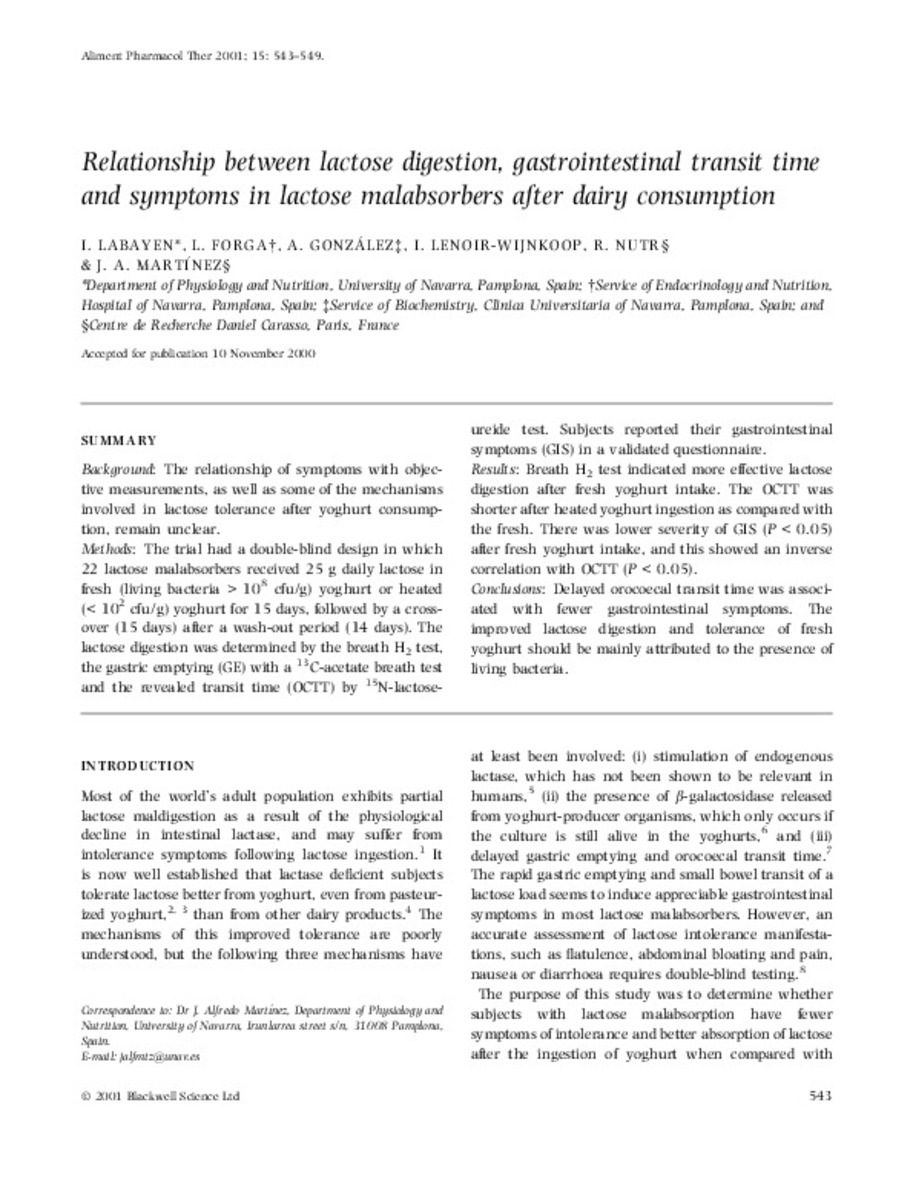Relationship between lactose digestion, gastrointestinal transit time and symptoms in lactose malabsorbers after dairy consumption
Keywords:
Lactose tolerance
Living bacteria
Gastrointestinal symptoms
Publisher:
Wiley-Blackwell
Citation:
Labayen I, Forga L, Gonzalez A, Lenoir-Wijnkoop I, Nutr R, Martinez JA. Relationship between lactose digestion, gastrointestinal transit time and symptoms in lactose malabsorbers after dairy consumption. Aliment Pharmacol Ther 2001 Apr;15(4):543-549.
Statistics and impact
0 citas en

Items in Dadun are protected by copyright, with all rights reserved, unless otherwise indicated.











